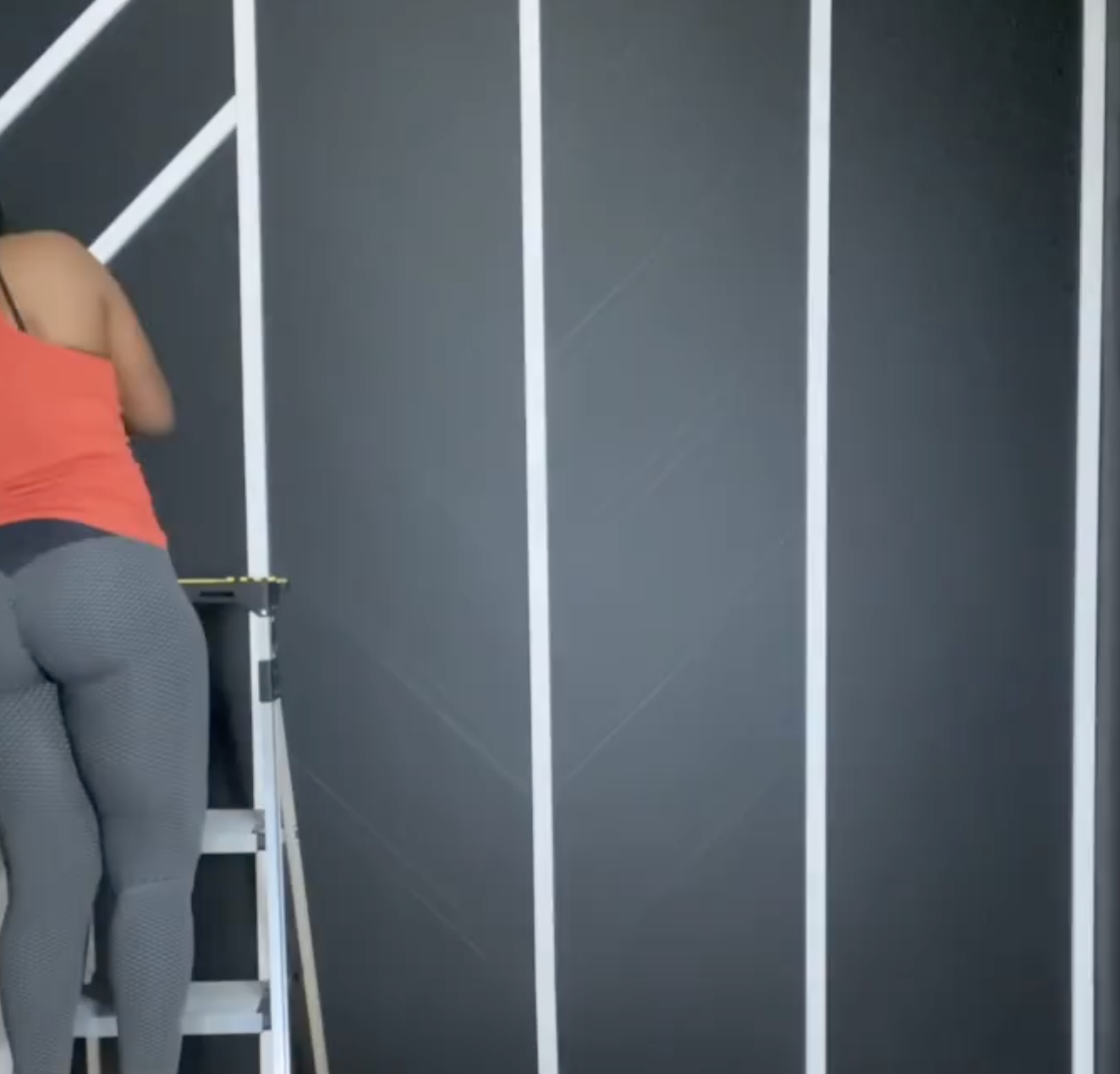HOW TO CREATE A HERRINGBONE ACCENT WALL
I took a bit of a Hiatus from #diyprojects at the studio but I’m rejuvenated and I’m back and SOOO excited to share with y’all all what I have up my sleeve. I literally have TWENTY SEVEN projects in my que, some will be challenging in terms of gathering materials but I’mma make it happen!
Today I’m sharing my accent wall that I created in my office! Y’all! This literally only takes a day and a half max to complete with just a few key tools.
SUPPLIES NEEDED:
- Gauge Brad Nailer- I got this one from Amazon, can’t beat that price and it works well! You will need to hook it up to an air compressor though.
19 MDF boards- (0.656-in x 2.5-in x 8.08-ft) can also be purchased at Lowe’s (thats where I got mine).
Miter Saw- This isn’t the one we have, but is available with Prime and reasonably priced.
Caulk Gun and Caulk- (I used this caulk because it is specifically for trim/molding and is paintable-important!)
Wood Glue- I only used this to reinforce the boards that weren’t getting nailed into studs.
Spackle- There might be better ones out there, but this is the kind I have used for all of our projects. Also, you may want to get a putty knife (I just use my fingers lol).
Sanding Block- any low to medium grit sanding block would work though. You’ll also need an old towel (or tack cloth if you want to be correct lol) to wipe away dust after sanding.
Gallon of paint (your color choice)
Painting supplies- trim brush, roller, drop cloth, painters tape.
Measuring tape and level- for good measure. Get it? ;)
Now that the product details are out of the way, lets get down to business.
Step 1: Use the stud finder and mark all of your studs. I always try to nail into studs whenever I can, but during this project it wasn’t possible half the time, but thats what the wood glue is for! Extra reinforcement is always good.
Step 2: I started by framing out the wall with the MDF boards. I did the top first, then the bottom, and then the sides. For me, one MDF board didn’t go all the way across the top and bottom, which was fine, so I used a second for each and you’ll just caulk down the seam later. You can see the seam in the picture below.
I didn’t use the wood glue here, just nailed where the studs were.
Step 3: After you have the wall framed out with the MDF board, you’ll want to measure the center of the wall and place a vertical board there. You’ll need to use your miter saw to trim it down so it sits tightly in between your top and bottom boards. For me, there was no stud here, so I reinforced the board with some wood glue before I nailed that baby up.
Step 4: Once you have the center board in place, you’ll need to again measure the center point of your two new panels (right and left of the center board) and place vertical boards in the center of those also.
Step 5: Once you have all your vertical boards in place, you’re done! JK, now comes the fun part.
Its time to cut all your angled boards and get that herringbone pattern started! I didn’t do the traditional measuring, since I wanted it to be unique. You can watch me in action to see how I did it!
Step 6: The next part is really important, and somewhere I messed up originally. You need to figure out how far apart you want the spacing between each angled board to be and you’ll make a template spacer out of one of your MDF boards. You’ll use this spacer as a guideline all the way up the wall.
Step 7: The hard part is done, nailing and cutting is over! Whew. Now you need to fill all the nail holes with spackle by using a putty knife/scraper to apply (or be like us and just use our fingers lol). We also filled larger seams, and all outside edges against the walls and ceiling, with caulk. Caulk can’t be sanded unlike spackle (fun fact), so you have to make sure you wipe up any access caulk before it dries. Theres some great videos on Youtube about how to apply caulk.
Step 8: Once you have all nail holes and seams filled, allow enough time for the spackle to dry before you sand. By the time we were done filling, the first nail holes we filled were already dry. This is where it gets messy. Take a low-medium sanding block and start sanding, sanding, away! You want to sand off all the spackle so the boards are nice and smooth so the paint will apply nicely. This is the messy part, so after you’re done sanding take a vacuum and a tack cloth (or in our case a semi damp rag) and clean up and wipe away as much dust as you can. I wipe down every board and every little nook and cranny- you don’t want to find any leftover dust while painting!
Final Step: Now time to paint. Make sure you lay down a drop cloth on the floors so you don’t drip paint. Also, take your painters tape and tape off the ceiling and walls so you don’t mess those up. I used a roller for the most part, but also a trim brush to get into all the little corners and edges of the boards. I only did one coat of paint.
I love how this #diy #herringbone #accentwall wall came out. I didn’t want the traditional board and batten or trim walls. I wanted it unique to me and my style.
How’d I do?! Tell me in the comments below! And feel free to share with a friend!


